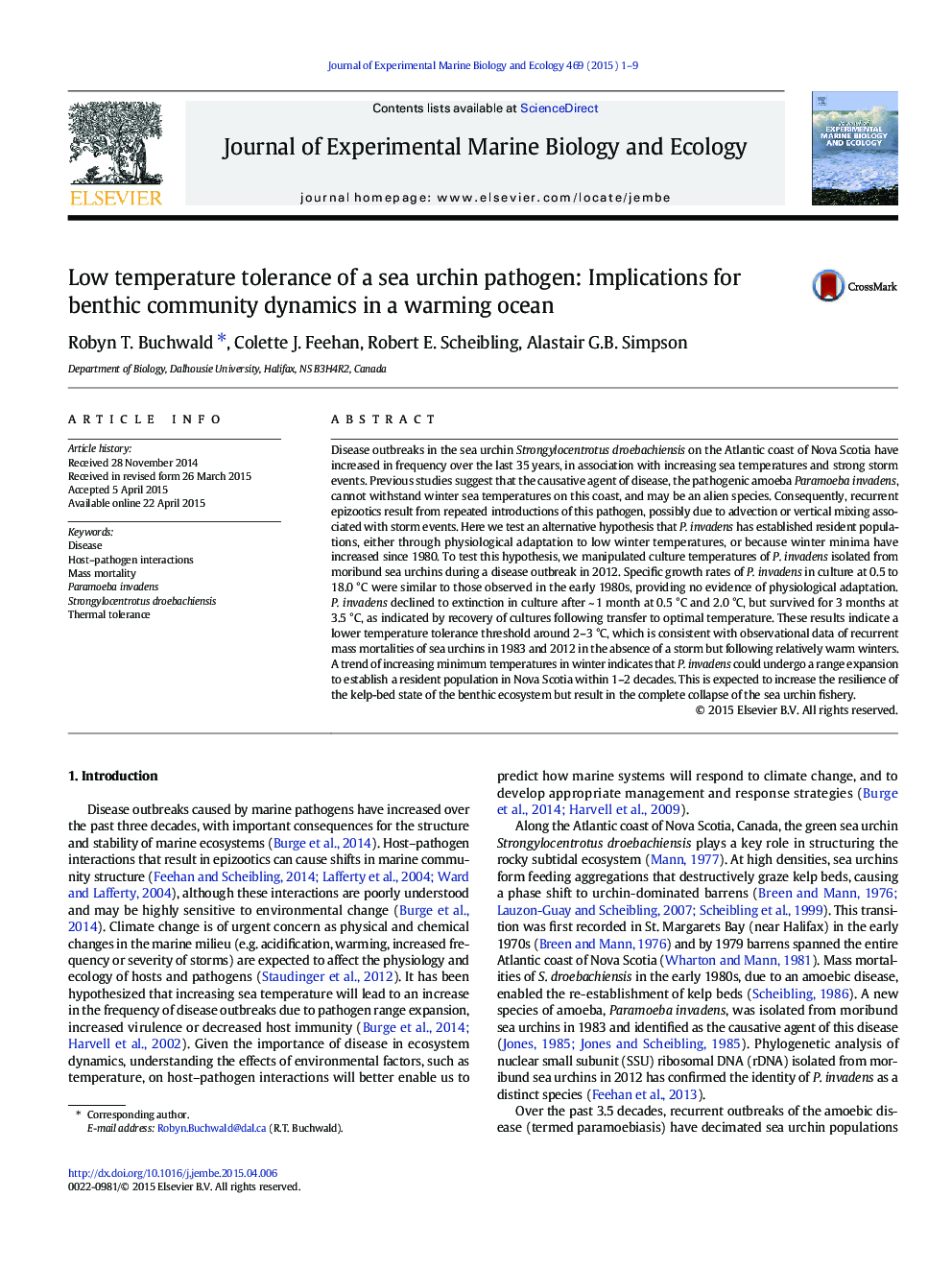| Article ID | Journal | Published Year | Pages | File Type |
|---|---|---|---|---|
| 4395412 | Journal of Experimental Marine Biology and Ecology | 2015 | 9 Pages |
•Culture extinction at 2 °C indicates lower threshold for survival of P. invadens.•Recovery potential in culture is lost after about 1 month at or below 2 °C.•Historical data suggests overwintering by P. invadens in years with few days < 2.5 °C.•Temperature-dependent growth rate provides no evidence of adaptation over 35 years.•Rising sea temperature may enable establishment of local populations of P. invadens.
Disease outbreaks in the sea urchin Strongylocentrotus droebachiensis on the Atlantic coast of Nova Scotia have increased in frequency over the last 35 years, in association with increasing sea temperatures and strong storm events. Previous studies suggest that the causative agent of disease, the pathogenic amoeba Paramoeba invadens, cannot withstand winter sea temperatures on this coast, and may be an alien species. Consequently, recurrent epizootics result from repeated introductions of this pathogen, possibly due to advection or vertical mixing associated with storm events. Here we test an alternative hypothesis that P. invadens has established resident populations, either through physiological adaptation to low winter temperatures, or because winter minima have increased since 1980. To test this hypothesis, we manipulated culture temperatures of P. invadens isolated from moribund sea urchins during a disease outbreak in 2012. Specific growth rates of P. invadens in culture at 0.5 to 18.0 °C were similar to those observed in the early 1980s, providing no evidence of physiological adaptation. P. invadens declined to extinction in culture after ~ 1 month at 0.5 °C and 2.0 °C, but survived for 3 months at 3.5 °C, as indicated by recovery of cultures following transfer to optimal temperature. These results indicate a lower temperature tolerance threshold around 2–3 °C, which is consistent with observational data of recurrent mass mortalities of sea urchins in 1983 and 2012 in the absence of a storm but following relatively warm winters. A trend of increasing minimum temperatures in winter indicates that P. invadens could undergo a range expansion to establish a resident population in Nova Scotia within 1–2 decades. This is expected to increase the resilience of the kelp-bed state of the benthic ecosystem but result in the complete collapse of the sea urchin fishery.
